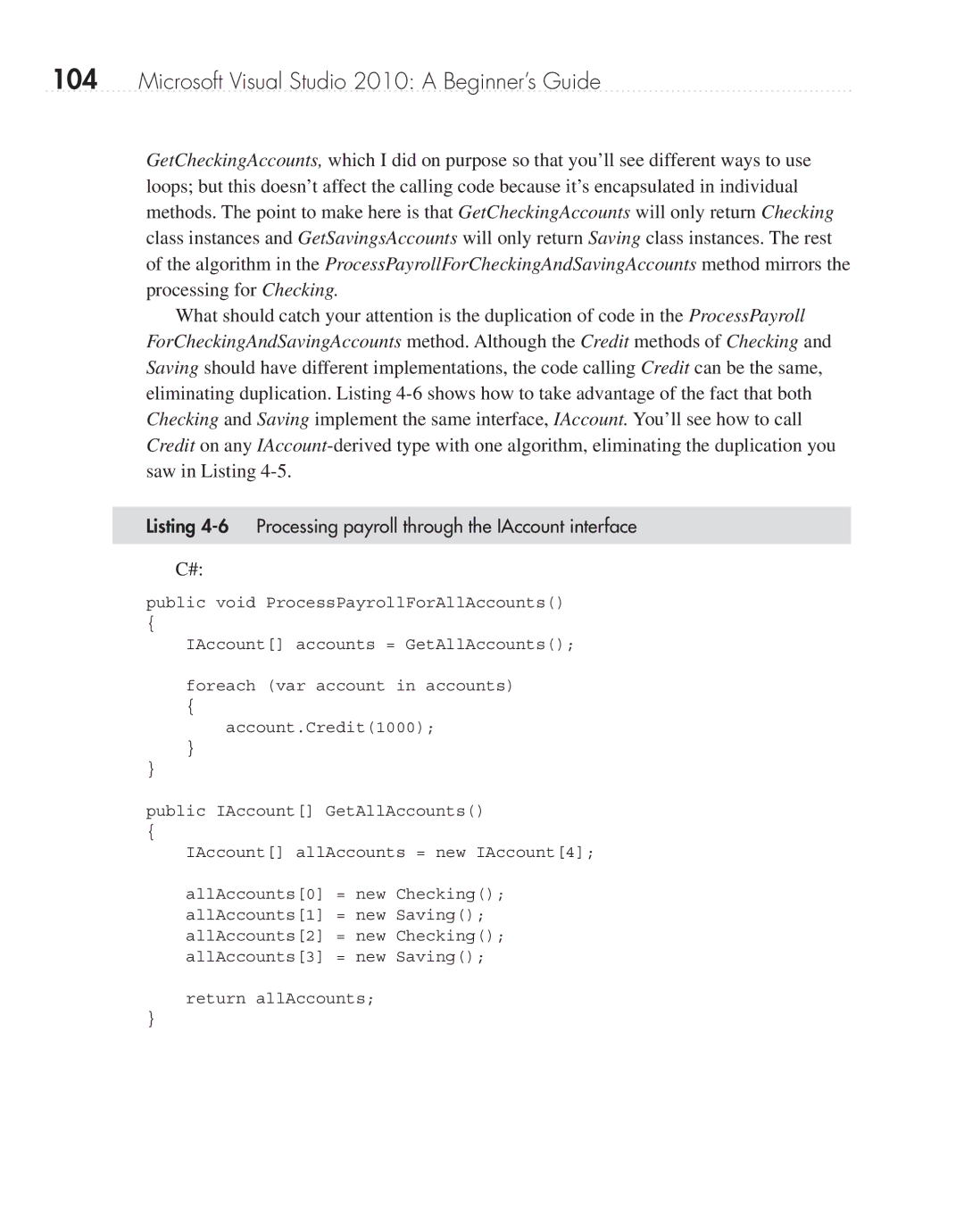
104Microsoft Visual Studio 2010: A Beginner’s Guide
GetCheckingAccounts, which I did on purpose so that you’ll see different ways to use loops; but this doesn’t affect the calling code because it’s encapsulated in individual methods. The point to make here is that GetCheckingAccounts will only return Checking class instances and GetSavingsAccounts will only return Saving class instances. The rest of the algorithm in the ProcessPayrollForCheckingAndSavingAccounts method mirrors the processing for Checking.
What should catch your attention is the duplication of code in the ProcessPayroll ForCheckingAndSavingAccounts method. Although the Credit methods of Checking and Saving should have different implementations, the code calling Credit can be the same, eliminating duplication. Listing
Listing
C#:
public void ProcessPayrollForAllAccounts()
{
IAccount[] accounts = GetAllAccounts();
foreach (var account in accounts)
{
account.Credit(1000);
}
}
public IAccount[] GetAllAccounts()
{
IAccount[] allAccounts = new IAccount[4];
allAccounts[0] = new Checking(); allAccounts[1] = new Saving(); allAccounts[2] = new Checking(); allAccounts[3] = new Saving();
return allAccounts;
}
